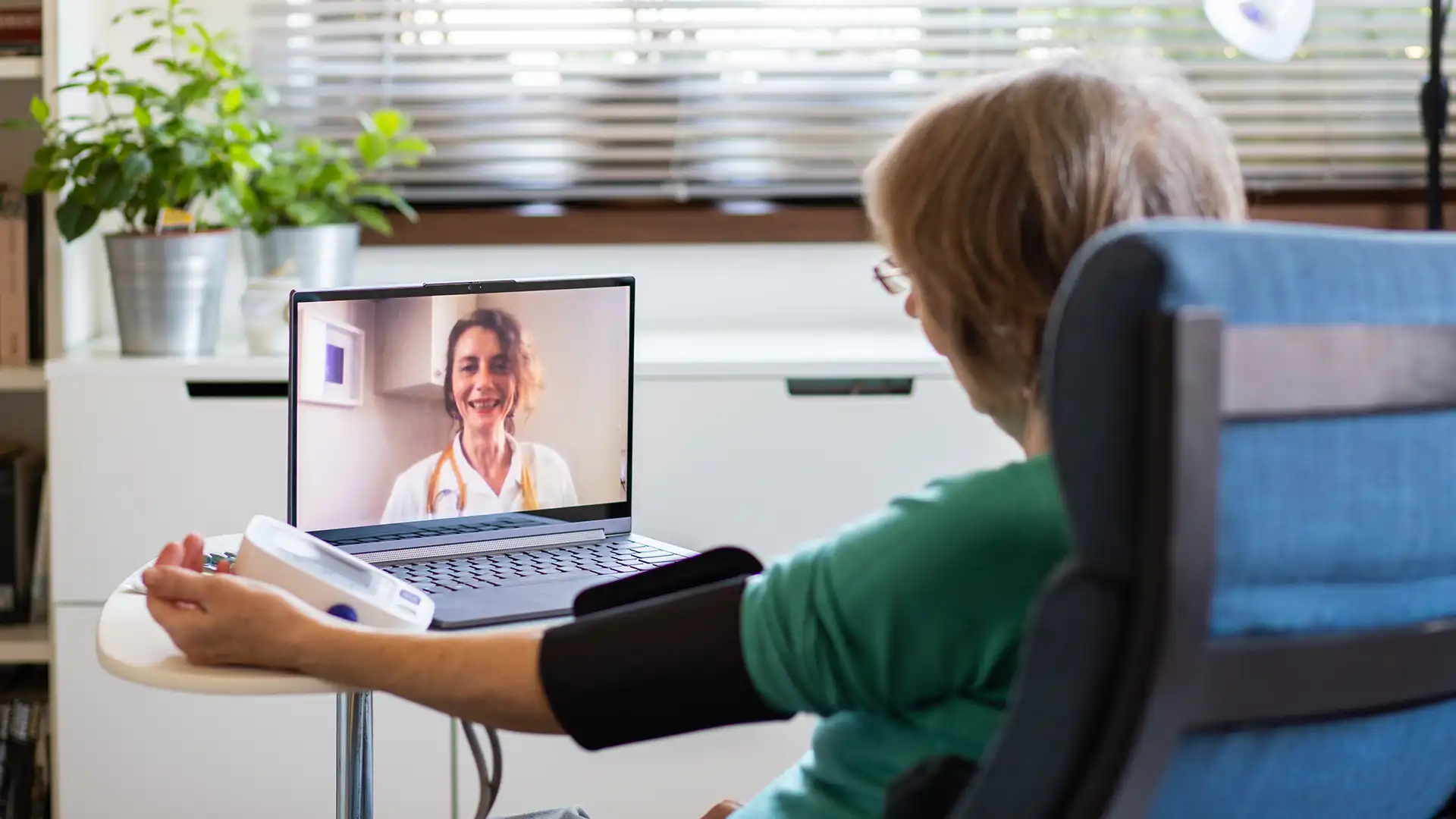Since the pandemic, virtual care has moved from a novelty to a necessity. Today, patients utilize telehealth services in some form, whether for urgent care, therapy, or managing chronic conditions. Yet despite its convenience, many patients still struggle with technical hiccups that turn a virtual doctor visit into a frustrating experience.
Whether you’re new to online appointments or a seasoned user, technical readiness can significantly impact your experience. From poor Wi-Fi to camera issues and login confusion, these problems are common but preventable. In this guide, we’ll walk you through simple, practical steps to ensure your next telemedicine visit is smooth, stress-free, and productive.
What Is a Virtual Doctor Visit?
A virtual doctor visit allows you to connect with a licensed healthcare provider via video call, phone, or secure chat, all from the comfort of your own home. There’s no need to commute, wait in a crowded lobby, or take half a day off work. It’s fast, flexible, and increasingly becoming the go-to option for everyday medical care.
This form of care is part of the broader telehealth ecosystem, which encompasses everything from telehealth management for mental health to telehealth urgent care for non-emergency issues, as well as regular checkups and chronic condition monitoring. Many providers now offer fully integrated virtual services, so you can do everything from consulting with a doctor to renewing prescriptions and reviewing test results all online.
Common Reasons to Use Virtual Care:
- Managing chronic conditions like diabetes, hypertension, or asthma
- Receiving mental health support through virtual counseling or psychiatric care
- Getting care for minor illnesses like colds, skin rashes, infections, or allergies
- Handling follow-up visits after surgery, hospitalization, or previous consultations
- Requesting prescription refills or medication adjustments without a trip to the clinic
Beyond convenience, a virtual visit helps reduce your risk of exposure to contagious illnesses, which is especially important for immunocompromised individuals or during flu season. And because providers can often see more patients virtually, appointments are typically available sooner than in-person slots, especially for non-urgent issues.
Choose the Right Platform for Your Virtual Appointment
Not all providers use the same telehealth system. Some individuals may use Zoom, while others may opt for a dedicated app or a patient portal. Knowing which platform your provider uses and whether it is compatible with your device is the first step.
Tips:
- Ask the clinic ahead of time which app or platform will be used.
- Download and test it at least one day before your online telehealth appointment.
- Make sure your device (phone, tablet, or computer) meets the minimum system requirements.
This is a crucial step in learning how to get a virtual doctor appointment running without delays.
Check Your Internet and Device Settings
A poor connection can ruin even the best-prepared telehealth visit. Before your appointment, test your internet speed. You’ll want at least 1.5 Mbps for both upload and download speeds to ensure a stable video call.
Tips:
- Use Wi-Fi instead of mobile data when possible.
- Close other apps or browser tabs to reduce bandwidth use.
- If using a phone, ensure it is fully charged and not set to “Battery Saver” mode, as this may block access to the camera or microphone.
Don’t forget to test your webcam and microphone too, especially if you’re using a laptop or desktop computer.
What to Prepare for Virtual Care Appointment
Success in a virtual visit isn’t just about the tech; it’s also about being medically prepared.
- A list of current medications and dosages
- Your medical history (especially if you’re seeing a new provider)
- Recent symptoms or health changes
- Your preferred pharmacy for prescriptions
- Blood pressure, glucose, or weight readings (if applicable)
Being prepared helps you and your doctor make the most of the limited time available. Most visits last about 15–30 minutes, so every minute counts.
Set Up in a Quiet, Well-Lit Space
Your environment matters. A well-lit, quiet space allows your provider to see and hear you clearly, which is especially important for telehealth management or evaluations of physical symptoms.
Tips:
- Avoid sitting in front of windows (backlighting makes you hard to see).
- Let others in your home know not to disturb you.
- Keep pets and distractions out of the room.
- Use headphones if you’re worried about privacy or background noise.
This helps your virtual doctor appointment feel more like a real one and ensures better communication.
Log In Early. Don’t Wait Until the Last Minute
One of the biggest mistakes patients make is logging in right at the appointment time, only to encounter technical issues. Give yourself a buffer by logging in 10–15 minutes early. That way, you have time to troubleshoot any unexpected glitches.
Some clinics use a virtual waiting room, just like a physical clinic, so logging in early doesn’t guarantee you’ll be seen earlier, but it does mean you’ll be ready when the provider is available.
Have a Backup Plan
Even the best setups can fail. If your video doesn’t work or the platform crashes, be ready to switch to a phone call.
Tips:
- Keep your phone nearby with the ringer on.
- Make sure your contact number is up to date with the clinic.
- Ask your provider beforehand what the fallback option is in case the video fails.
This is especially important for time-sensitive needs, such as telehealth care or prescription renewals.
What to Expect During the Visit
A virtual appointment typically starts with a few check-in questions from a nurse or medical assistant. Then, the doctor joins the call and discusses your concerns.
They may ask you to:
- Show areas of pain or rash using your webcam
- Check your pulse or breathing patterns
- Perform simple movements to assess mobility
Ultimately, you’ll receive the following steps, including prescriptions, referrals, or instructions for follow-up care. Some platforms allow you to download a visit summary or chat with a nurse afterward.
After the Appointment: Follow Through Like You Would In Person
Just because it’s virtual doesn’t mean follow-up is less critical.
- Schedule any lab work, imaging, or follow-up appointments right away
- Fill your prescriptions and review instructions
- Use the messaging feature in your patient portal if you forgot to ask something
Many visit platforms also allow you to access test results and send messages securely. Don’t hesitate to use them.
Benefits Beyond Convenience
If you’ve never tried a virtual visit, you might assume it’s cold or impersonal, but most patients are surprised at how connected and practical the experience actually feels. While it’s undeniably convenient, the real value of telehealth goes deeper.
Here’s what makes virtual care truly valuable:
- Accessibility: Whether you’re homebound, traveling, or living in a rural area with limited medical facilities, virtual visits bring care to you. All you need is a smartphone or computer with internet access.
- Affordability: Online or telehealth appointments are a cost-effective way to stay on top of your health without overspending.
- Time-Saving: You skip traffic, waiting rooms, and parking stress. Appointments start on time, and the entire process from check-in to follow-up is often more efficient than in-person visits.
Virtual care is particularly effective for individuals managing mental health conditions. With telehealth therapy, patients can access real-time support from licensed counselors or psychiatrists without needing to leave home, removing not only logistical barriers but also social stigma.
Conclusion
You shouldn’t need a tech degree to have a smooth virtual doctor visit, and with a bit of preparation, you won’t. From selecting the correct device and app to having your health information ready, each step contributes to a better experience.
Telehealth isn’t going anywhere. As more services transition to digital, you can take control of your healthcare from anywhere. Explore our telehealth service today to schedule a virtual appointment that fits seamlessly into your life.
Frequently Asked Questions (FAQs)
Can I include a family member in my virtual doctor visit?
Yes, most telehealth platforms allow you to have a caregiver or family member present during the session. Please notify your provider in advance. It can be helpful for support, note-taking, or translation needs.
What should I do if I need lab work after a virtual visit?
Your doctor will typically send an electronic order to a nearby lab or imaging center. You’ll receive instructions via email or your patient portal. Be sure to follow up promptly so your provider can review the results.
Can I switch providers if I’m not happy with my virtual care experience?
Yes, you’re not locked in. Most telehealth platforms or clinics allow you to choose a different provider for future visits. If something doesn’t feel right, it’s okay to request someone new.
Are virtual visits available outside regular business hours?
Yes, many telehealth services offer evening, weekend, or even 24/7 access, especially for urgent care. This flexibility makes it easier to get care without missing work or waiting days for an appointment.
How do I schedule a telehealth appointment?
Scheduling is simple—just visit our telehealth page, choose your preferred time, and book your appointment online. You’ll receive confirmation details and instructions on how to join your virtual visit.



